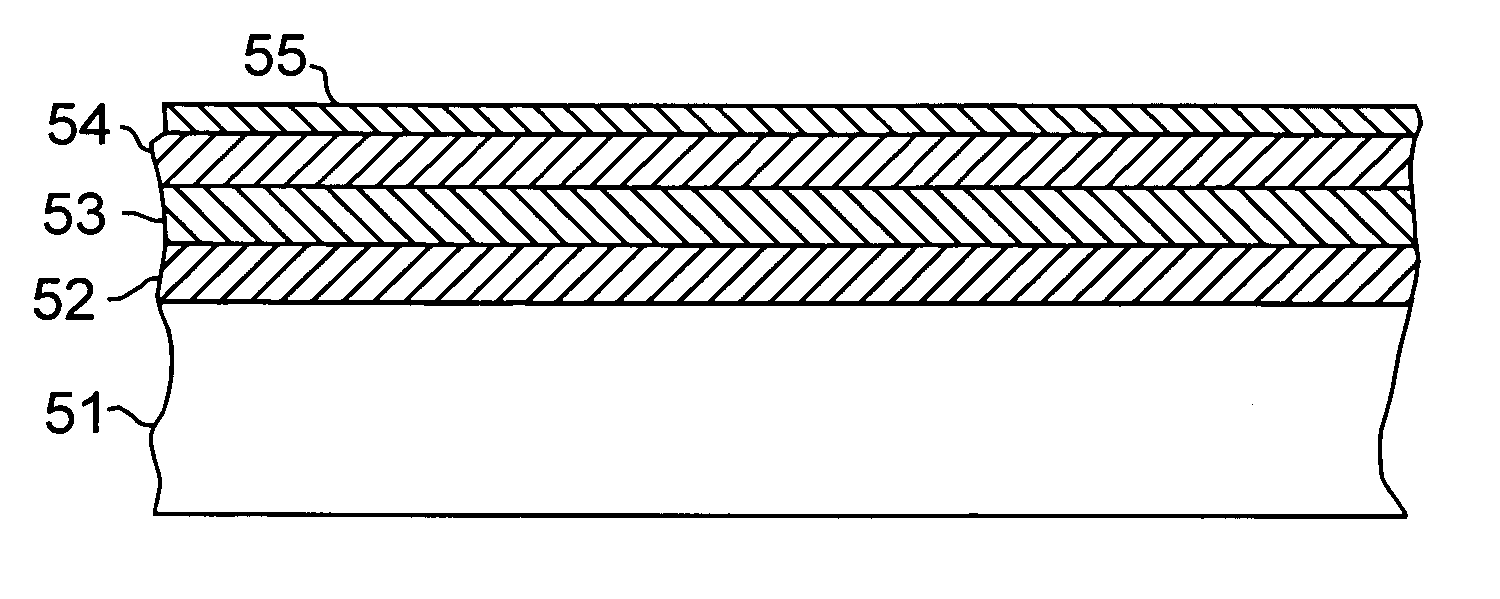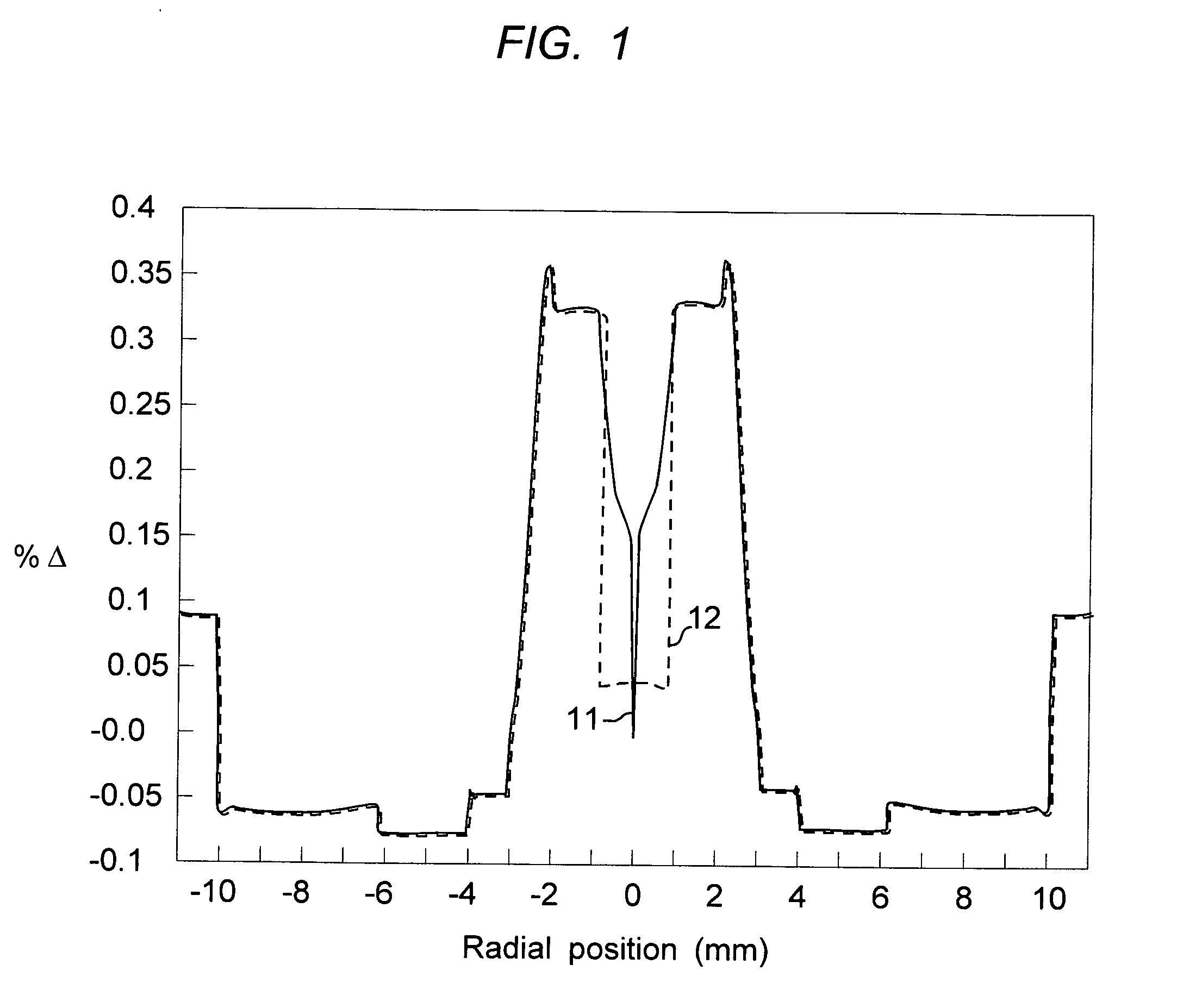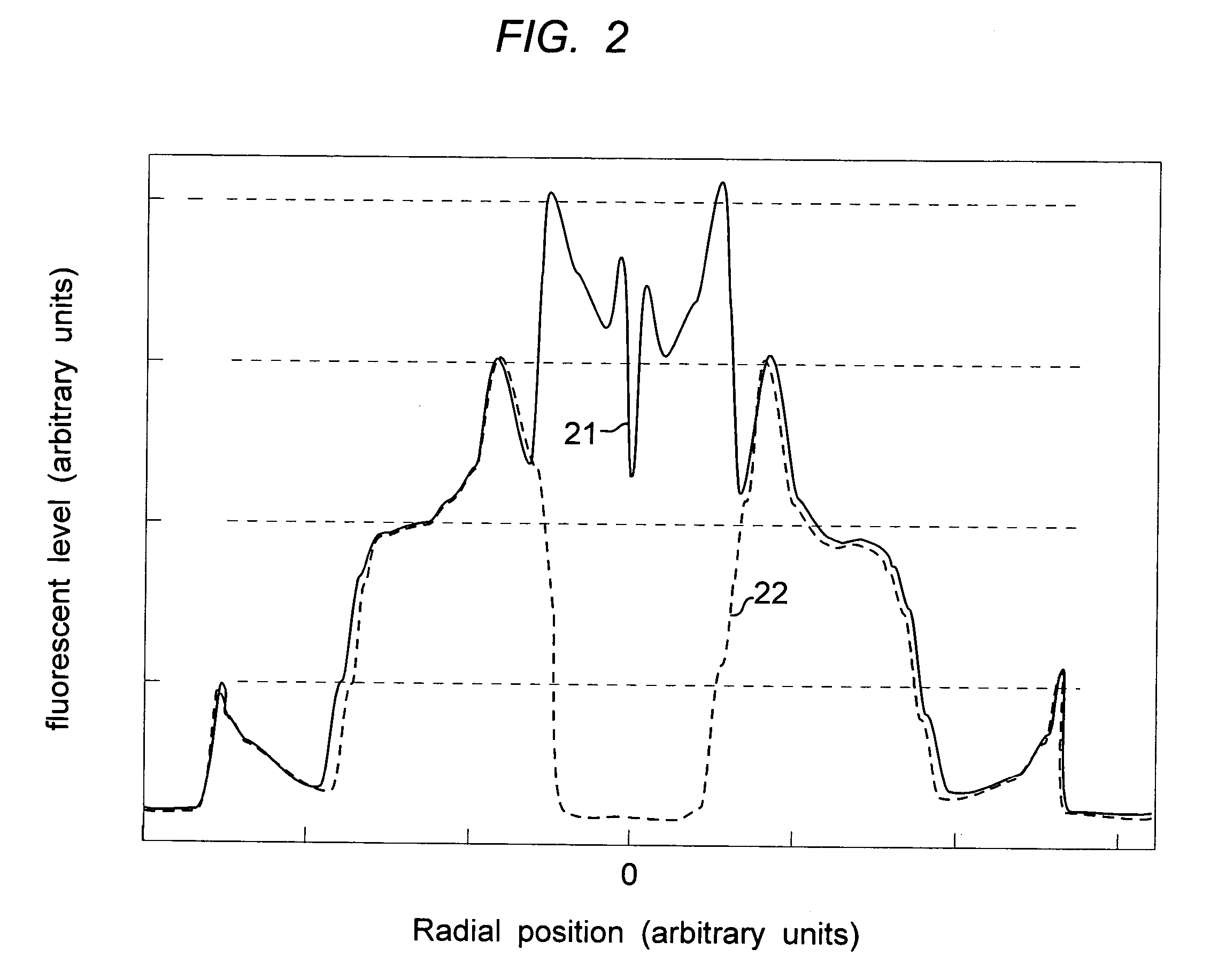Methods for optical fiber manufacture
a technology of optical fiber and manufacturing method, which is applied in the field of manufacturing optical fiber, can solve the problems of layer slowing even that process by orders of magnitude, and achieve the effects of reducing the number of geo defect centers produced, reducing the potential for ge defect center formation, and reducing the loss of gexoy
- Summary
- Abstract
- Description
- Claims
- Application Information
AI Technical Summary
Benefits of technology
Problems solved by technology
Method used
Image
Examples
Embodiment Construction
[0019] With reference to FIG. 1, two preform refractive index profiles of a step-index-type design are shown. The central step-index core of the fiber is labeled as 1. The spike structure shows individual MCVD layers which display the characteristic MCVD variation from higher index on the OD of a given layer to lower index on the ID of a given layer. This effect is due to evaporation of germanium from the deposited particle surfaces as each layer is sintered. The effect is most evident for the innermost layer—also the thickest, labeled 2—where the sharp gradation in index is labeled 3, varying from a maximum of approx. 0.325% Δ to a minimum of about 0.225% Δ. The center dip, labeled 4, also known as burnoff, familiar to those skilled in the art, is due to loss of Ge through the inner surface of the hollow MCVD core tube during high temperatures of the collapse step. In the alternate profile, the last deposited layer (4) was replaced by a relatively thick silica layer—an exaggerated ...
PUM
| Property | Measurement | Unit |
|---|---|---|
| thickness | aaaaa | aaaaa |
| thickness | aaaaa | aaaaa |
| diameter | aaaaa | aaaaa |
Abstract
Description
Claims
Application Information
 Login to View More
Login to View More - R&D
- Intellectual Property
- Life Sciences
- Materials
- Tech Scout
- Unparalleled Data Quality
- Higher Quality Content
- 60% Fewer Hallucinations
Browse by: Latest US Patents, China's latest patents, Technical Efficacy Thesaurus, Application Domain, Technology Topic, Popular Technical Reports.
© 2025 PatSnap. All rights reserved.Legal|Privacy policy|Modern Slavery Act Transparency Statement|Sitemap|About US| Contact US: help@patsnap.com



